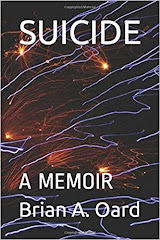The insight of deconstruction into the volatile, collapsible nature of figurative language is probably something writers shouldn't think about too much. Indeed, it's probably something most human beings needn't worry themselves about in their day-to-day linguistic activity. Even deconstructionists pragmatically forget all those aporias when they, for example, order a meal at an expensive restaurant (or a hooker from Eliot Spitzer's favorite website). A good analogy for the relationship between deconstruction and the 'everyday' use of language is the difference between the subatomic and 'macro' understandings of the structure of matter. We all know that a brick, on the subatomic level, consists mostly of empty space (the space between the nucleus of each atom and its electrons); we also know, however, that the 'empty space' of a brick slamming into the 'empty space' of a forehead will cause intense pain. By this analogy, deconstruction presents a 'subatomic' view of language that, while likely accurate, can hardly be a paradigm for language use in the realm of everyday discourse. We understand each other through a pretended univocality that deconstruction exposes and undermines. We may 'know better,' but that knowledge is not especially useful when asking for directions in a strange town. (Unless it's a very strange town, populated entirely by strict Derrideans.)
Every successful deconstructive reading is a defeat, and all these defeats take the same general form: two radically incompatible meanings oscillate around an aporia, a point of epistemological failure. In the world according to de Man, the winner always loses.
Subscribe to:
Post Comments (Atom)










No comments:
Post a Comment